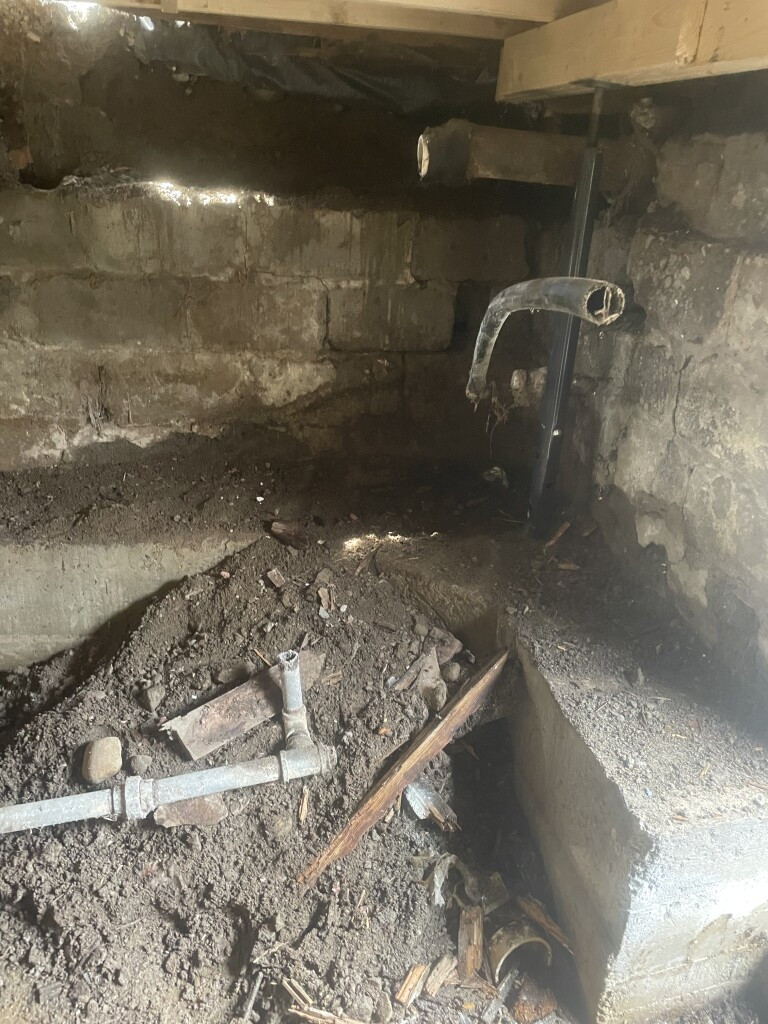When your home’s foundation requires repair, it’s essential to understand your options. Have you considered piering or slabjacking? Each method has its advantages and disadvantages. For instance, piering can provide long-lasting stability, but it’s often more expensive and time-consuming. On the other hand, slabjacking can be quicker and less costly, but it might not resolve deeper structural issues. How do you determine which method is best suited for your particular situation? Let’s examine these two techniques closer to help you make an informed decision.
Understanding Foundation Problems
Why are foundations so essential to our homes? The answer lies in their role as the bedrock upon which your house rests. They bear the weight of your dwelling, providing stability against environmental forces like wind and soil movement. Ignoring foundation issues can lead to extensive, cost-prohibitive damage.
Understanding foundation problems begins with recognizing their telltale signs. You may notice that doors and windows don’t close properly, or you might see cracks in your walls or floors. These symptoms don’t necessarily mean you’re facing a foundation issue, but they’re indicators warranting further investigation.
The root cause of foundation issues can be multifaceted. Poor construction, inadequate drainage, and environmental changes can all contribute. For instance, expansive clay soils can expand and contract with moisture levels, applying pressure on your foundation.
On the other hand, soil erosion can lead to foundation settlement as the supporting soil is washed away.
To choose the right repair method, you need to understand the source of the problem first. Only then can you weigh the pros and cons of each method, such as piering or slabjacking, to decide the best course of action.
Exploring the Piering Method
Now, let’s turn your attention to the piering method, a common solution for foundation repair.
Understanding the process is essential; it involves driving steel pipe pilings into the soil to rectify foundation issues.
We’ll also examine the pros and cons of piering, providing a thorough view of its effectiveness and potential drawbacks.
Understanding the Piering Process
Your home’s structural integrity heavily relies on a strong foundation. If it’s compromised, piering is a method often used for its repair. But what exactly is this process?
First, you’d need to understand that piering is a technique that involves driving steel pipe pilings into the ground. Here’s how it works: Think of it as a two-step process.
In the first step, hydraulic jacks are used to lift the foundation back to its original level. These jacks are placed on stable soil or bedrock to guarantee a firm base.
In the second step, the piers are then installed. These are fundamentally long cylinders made of steel pipe that are driven into the ground underneath the foundation. The foundation is then carefully transferred onto these piers, effectively lifting and supporting it.
The depth and number of piers needed vary based on factors such as soil condition and the weight of your home. It’s a precise process that requires careful calculation and execution.
Pros and Cons of Piering
Delving into the piering method, it’s essential to weigh the pros and cons before deciding if it’s the right solution for your specific foundation problems.
Piering, also known as piling, is a deep foundation repair method that involves driving steel pipe pilings into the ground to stabilize your home’s foundation.
In terms of advantages, piering provides long-lasting support. This method reaches down to bedrock or stable soil, bypassing problematic layers of earth. When properly installed, piers can halt further settlement and even lift your home back to its original level.
It’s also less disruptive to your landscape compared to other methods.
However, piering isn’t without drawbacks. It’s typically more expensive due to the use of heavy-duty materials and machinery. The process can be time-consuming, especially if your property has a larger size or more complex issues.
Additionally, incorrect installation can lead to additional damage, emphasizing the need for professional execution.
Benefits of Piering
Understanding the benefits of piering can greatly impact your decision-making process when considering foundation repair methods.
Piering, a process involving the use of steel pipes driven into the ground to support your home’s foundation, offers a variety of advantages.
The primary benefit you’ll appreciate is its long-term effectiveness. Unlike other methods, piering provides a permanent solution to foundation problems. It’s designed to last the lifetime of your home, cutting out the need for frequent repairs.
Another significant advantage is the minimal disturbance to your property. The work is focused around your home’s foundation, meaning less mess and landscaping damage. Unlike slabjacking, piering doesn’t involve any concrete being poured on-site, vastly reducing the cleanup time.
Piering also offers a high degree of accuracy. Thanks to the use of hydraulic jacks, the process allows your contractor to precisely control the lift of your home’s foundation, ensuring an even and accurate result.
Lastly, it’s worth noting that piering can be done in any weather, offering greater flexibility in scheduling repairs.
Drawbacks of Piering
While piering offers a myriad of benefits, it does come with its fair share of drawbacks. The most significant is the cost. Piering tends to be more expensive than other foundation repair methods, which can be a deterrent for some homeowners. The process involves installing steel piers deep into the ground, a task that’s labor-intensive and requires specialized equipment.
Furthermore, piering isn’t a quick fix. The installation process can take weeks, and that’s not including any additional time needed for preparation or finishing work. This timeline can be a significant inconvenience if you’re living in the home during repairs.
Another drawback is that piering may not be suitable for all soil types. It requires deep, stable soil for the piers to anchor into. If your property has loose or sandy soil, piering mightn’t be an effective solution.
Additionally, piering is a disruptive process. It often necessitates extensive excavation around your property, which could lead to landscape damage. You’ll need to weigh the potential for harm to your yard and gardens before deciding on this method.
An Overview of Slabjacking
Now, let’s turn your attention to slabjacking, a foundation repair method that’s both effective and efficient.
You’ll grasp the specifics of this process, highlighting its benefits and identifying any potential limitations.
Understanding Slabjacking Process
Many homeowners may not be familiar with the term “slabjacking,” which is a specialized method used in foundation repair. It’s a process where a mixture, often made of cement, soil, sand, and water, is pumped beneath your foundation slab. This mixture, known as slurry, helps to raise the slab to its original level.
Here’s how it works: First, your contractor will drill small holes into the sunken slab. These holes are typically 1 to 2 inches in diameter. Then, they’ll inject the slurry into these holes using a hose. As the slurry fills the voids under the slab, it begins to exert pressure upward. This pressure lifts the slab back into place.
Once the desired level is achieved, the holes are filled in and sealed.
Understanding the slabjacking process is essential to making a well-informed decision about your foundation repair. It’s important to remember that this method is a non-invasive solution that doesn’t require excavation.
However, it’s not suitable for all situations. Factors such as the weight of the slab, soil conditions, and the severity of the settlement will determine if slabjacking is the best method for you.
Benefits of Slabjacking
Having understood the slabjacking process, it’s equally important to contemplate its benefits.
Slabjacking isn’t only cost-effective but also highly efficient. You’ll find that it’s less expensive than other methods like piering. The reason? It uses less equipment and fewer materials.
Slabjacking’s speed of execution is another significant advantage. You’ll be amazed at how swiftly your foundation problems can be rectified. With experienced professionals, the whole process might take only a few hours, minimizing the disruption to your life.
Slabjacking is also less invasive than other methods. It doesn’t require extensive excavation, which means minimal damage to your yard or landscape. You’ll appreciate how it leaves your property virtually untouched, save for a few small holes drilled for the injection process.
Another key benefit is the durability of slabjacking repairs. It’s not a quick fix. The grout solidifies into a solid, compact mass, providing a stable base for your foundation. This guarantees longevity, and you can rest assured that you won’t be dealing with the same issue anytime soon.
Lastly, slabjacking is environmentally friendly. The materials used are typically non-toxic, meaning they won’t harm the surrounding soil or groundwater. It’s a repair method that’s good for your home and the earth.
Potential Slabjacking Limitations
While slabjacking offers numerous advantages, it’s crucial to acknowledge a few potential limitations that may come with this repair method.
For one, it’s not a one-size-fits-all solution. Slabjacking is most effective for minor sinking or settling issues. If your foundation has significant damage, such as major cracks or shifting, slabjacking may not provide a long-term solution. Instead, it could merely mask the problem temporarily.
Further, the material injected under the slab can sometimes disrupt underground utilities. You’ll need to verify that there are no gas lines, water pipes, or electrical cables in the area where the slabjacking will occur. This precaution can add to the time and cost of the project.
Lastly, the aesthetic aspect shouldn’t be overlooked. The drilling required for slabjacking leaves small holes in your concrete. Although these are typically filled and smoothed out, they can still be noticeable depending on the age and condition of your concrete.
Advantages of Slabjacking
A considerable number of homeowners can reap substantial benefits from slabjacking, a proven foundation repair method.
It’s an economical option, often costing less than half of what you’d shell out for a complete foundation replacement. The affordability of slabjacking makes it a popular choice for many.
While cost is a pivotal aspect, the speed and efficiency of slabjacking also deserve mention. Often, the process can be completed in just one day, causing minimal disruption to your daily routine.
That’s a far cry from the weeks, or even months, that other methods may require.
Slabjacking doesn’t just repair your foundation; it greatly enhances its strength and durability.
The material injected beneath your foundation doesn’t just lift it back into position – it also stabilizes the soil and fills voids, creating a solid, supportive base that’s designed to withstand the test of time.
Lastly, slabjacking is non-invasive.
Unlike other methods, it doesn’t require digging up your yard or demolishing parts of your home.
You’ll appreciate this feature when you see your landscape intact, and your life back to normal sooner than you’d expect.
Limitations of Slabjacking
Despite slabjacking’s multitude of advantages, it’s important to contemplate its limitations as well. For instance, if your foundation’s damage is severe, slabjacking may not be the most effective solution. This method is less ideal for foundations with significant structural issues or those compromised due to expansive soil conditions.
Additionally, slabjacking isn’t a “one-size-fits-all” solution. The injected material, typically a mixture of soil, cement, and other additives, must be carefully selected based on the specific soil and environmental conditions of your property. Incorrect material selection can lead to ineffective results or even cause new problems.
One of the main drawbacks you’ll face is that slabjacking doesn’t address the root cause of your foundation’s settling or sinking. It’s a reactive, not a proactive solution.
Although it may raise your foundation back to its original position, it doesn’t provide long-term stability if the underlying soil issue isn’t resolved.
Making Your Foundation Repair Decision
Deciding on the best method for your foundation repair requires careful consideration of several factors.
You’ll need to assess the severity of the damage, the type of soil your property is built on, and the budget you’re working with.
In cases where the damage is extensive and the soil is expansive or unstable, piering tends to be the more effective solution.
It’s a more invasive process, but it also offers a more permanent fix. It involves driving steel piers deep into the ground to provide support and stability to the foundation.
However, it’s also the pricier option, so you’ll need to weigh the long-term benefits against the upfront cost.
On the other hand, if the damage is relatively minor and the soil conditions are favorable, slabjacking may be a viable option.
It’s less invasive and more cost-effective than piering, but it may not be as durable. It involves pumping a cement mixture under the slab to lift it back into place.
In the end, the right decision will depend on your specific circumstances.
It’s always beneficial to consult with a foundation repair specialist to get an expert opinion.
Frequently Asked Questions
What Is the Average Cost Difference Between Piering and Slabjacking?
You’re looking at a cost difference, on average, of several thousands. Piering typically costs more, around $1,000-$3,000 per pier. Slabjacking, however, is cheaper, generally falling between $500-$1,500 per hole. It’s a significant price disparity.
How Long Does Each Foundation Repair Method Usually Take?
It’s noteworthy to mention that piering often takes 1-3 days per pier, while slabjacking usually wraps up in a few hours. However, the time can vary based on the severity of your foundation issues.
Are There Any Environmental Implications to Choosing Piering or Slabjacking?
You’re right to contemplate environmental implications. Piering doesn’t disturb the surrounding soil much, but slabjacking can lead to chemical leakage. Both methods, however, require equipment that may increase your carbon footprint.
Is One Method Better Suited for Certain Types of Soil?
Yes, soil type does impact your choice. Piering’s ideal for unstable, shifting soils. You’d choose slabjacking for more compact, less volatile soils. You’ll need a professional’s assessment to determine your soil type and the best method.
Do I Need to Vacate My Home During the Repair Process?
You don’t necessarily need to vacate your home during repairs. However, it’s dependent on the severity of damage and chosen repair method. It’s best to consult with your contractor to determine what’s most suitable.
Conclusion
Choosing between piering and slabjacking is like traversing a labyrinth. Piering, the Hercules of foundation repair, provides robust support, but at a king’s ransom. On the other hand, slabjacking, quick and cost-effective, can be your knight in shining armor for minor issues. But remember, it may not slay the dragon of underlying structural concerns. Consult a foundation repair specialist to light your path. They’ll tailor the best solution to your home’s unique needs, helping you conquer your foundation repair journey.






